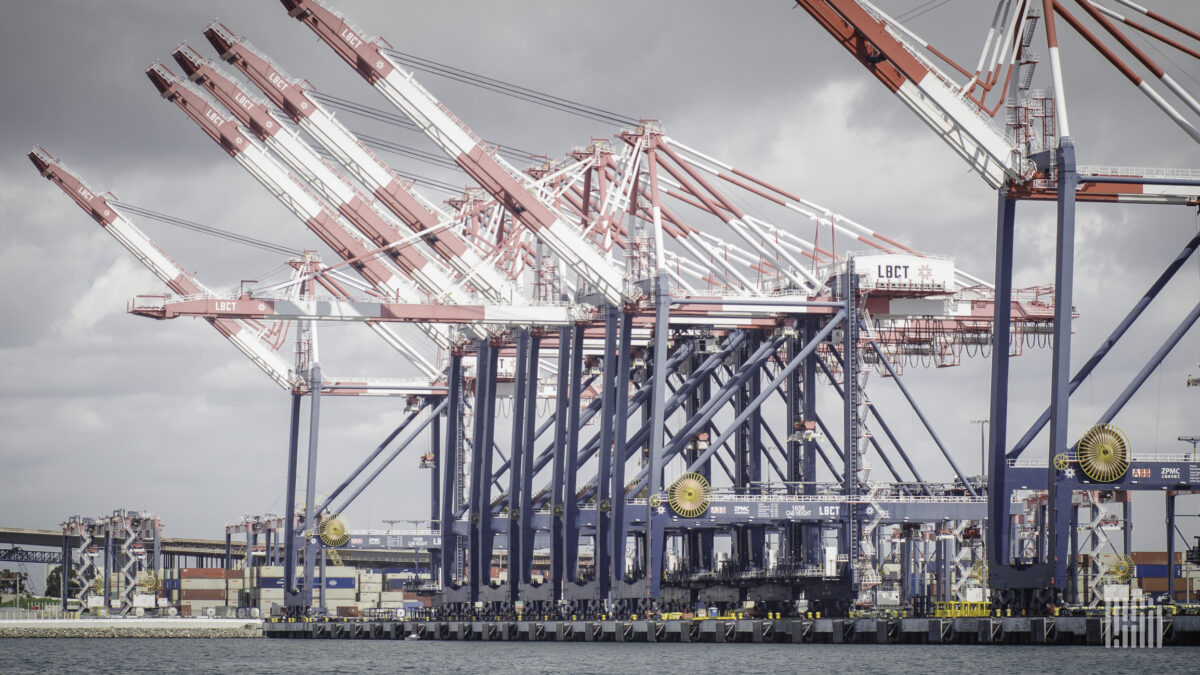[ad_1]
Hello, and welcome to the coolest community in freight! We know each other by now. What better way to celebrate the past year of bringing you cold chain news than to bring you a COOL discount on Future of Supply Chain tickets. June 4-5 in Atlanta, come hang out with the coolest community in freight. If you use RunningOnIceFSC24 at checkout, you can get a cool discount.
All thawed out
Just about every port in the U.S. can handle refrigerated cargo to some extent. There are some better at it than others. However, one holds the title as the preferred gateway for refrigerated export cargo. That would be the Port of Oakland, California. The Port of Oakland has taken the title as the one everyone wants to work with.
Cementing its cargo powerhouse title, the port is No. 1 by twenty-foot equivalent unit volume in refrigerated export trade among U.S. ports. It has held the top spot for seven consecutive years. That volume hit a value of a casual $7.1 billion in 2023.
The port is often the last U.S. port of call for container ships before they set sail for Asia. Therefore, refrigerated cargo can arrive fresher to overseas markets by leaving from Oakland.
Temperature checks
In the cold chain world, the shipments with the least margin for error hail from the biopharmaceutical space. It’s currently estimated that $35 billion a year is lost in the biopharmaceutical industry due to improper temperature storage or shipment delays. It’s not just the financial loss that’s a problem. It’s the people loss as a portion of the pharmaceuticals shipped are literally lifesaving medications.
This brings up the packaging side of things. Packaging in pharmaceutical products protects the delicate goods from external factors such as temperature variation and outside contaminants. At the root of any new drug, therapy or vaccine, there is always the conversation of how to get it to those who need it most. This conversation combined with companies’ interest in reducing carbon footprints and wasted packaging, has brought about some multiuse packaging materials.
A Pharma News Intelligence article says: “The pharmaceutical industry is estimated to produce more than 300 million tons of plastic waste annually, half of which is single-use. Considering that 85% of the waste generated by healthcare-related entities — including packaging for pharmaceuticals and medical equipment — is non-hazardous, there is potential to replace it with more environmentally friendly or reusable alternatives.”
We love to see a packaging revolution.
Food and drugs
The world of frozen food is a harsh one. New products are coming out almost weekly, meaning some of the classics are getting overlooked. Gone are the days when Stouffer’s, Lean Cuisine and Michelina’s were the undisputed champions of the frozen aisle. It would appear that consumers are going elsewhere as Nestle, the parent company of the aforementioned frozen food staples, reported sales growth slightly below expectations, rounding out 2023 on a less-than-stellar note.
The lacking performance is being blamed on a few things – mostly the sharp price increases. The rising pricing across grocery stores, but specifically in the prepared frozen food section, has really taken a toll. Many are split as to whether consumers have been pushed too far in regard to price hikes, and if they would be willing to come back to the brands if prices were lowered.
A Reuters article says: “Worries that companies are pushing price rises too far, especially as the cost of living crisis helps retailers’ private label brands grab market share, have led some investors and analysts to urge a focus on marketing and innovation. With many consumers swapping costly branded goods for cheaper alternatives, Unilever CEO Hein Schumacher said earlier this month that his company’s “competitiveness remains disappointing.”
Cold chain lanes
This week’s SONAR market is heading to Southern California – Ontario, California, to be more specific. Ontario is close to the ports of Los Angeles and Long Beach, pretty well-known import and export centers. Reefer outbound tender rejections are certainly on the decline and don’t seem to be coming up for air anytime soon. Rejection rates have dropped 90 basis points week over week to 3.91%. Reefer outbound tender volumes on the other hand have held on stronger than rejections but are also on the decline with a 5.91% drop w/w.
Capacity is loose and readily available in Southern California. Expect rates to be driven down on all fronts.
Is SONAR for you? Check it out with a demo!
Shelf life
BGL announces the sale of arctic industries and Store It Cold to Kinzie Capital
Africa Centre of Excellence for sustainable cooling and cold-chains (ACES)
Kuehne+Nagel Air Logistics expands services at JFK
Cold storage facility has huge $75m price expectation
Cold Chain Federation launches manifesto to unlock industry’s potential
Wanna chat in the cooler? Shoot me an email with comments, questions or story ideas at [email protected].
See you on the internet.
Mary
If this newsletter was forwarded to you, you must be pretty chill. Join the coolest community in freight and subscribe for more at freightwaves.com/subscribe.
[ad_2]
Source link












